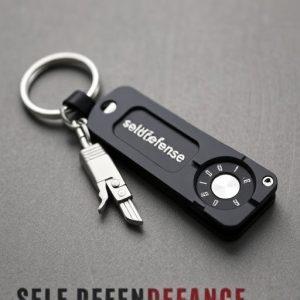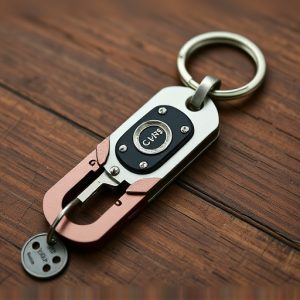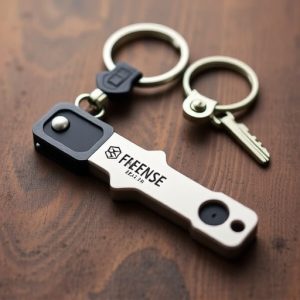Keychain Safety Devices: Legal Requirements for Personal Alarms and Decibel Limits
Understanding local laws is essential for consumers using personal alarm keychains with loud decibel…….
Understanding local laws is essential for consumers using personal alarm keychains with loud decibels (120+ dB) as a safety measure. Each region has unique regulations regarding maximum sound levels, labeling, and certification for these devices. Compliance ensures the alarm's effectiveness without causing harm. Decibel levels should be above 120 dB to startle and alert users in dangerous situations, with global standards guiding manufacturers. Regional variations exist due to cultural norms and crime rates, so understanding local laws is crucial for both manufacturers and users. Regular testing, clear labeling, and user guidance on activation ensure legal compliance and the device's functionality as a legitimate self-defense tool.
In today’s world, personal safety is paramount. One innovative solution gaining traction is the keychain alarm device—a compact yet powerful tool designed to deter threats and attract attention with loud decibels. This article explores the legal requirements surrounding these devices, delving into understanding global frameworks, regional variations, and key considerations for manufacturers and users. By examining decibel levels and their regulatory significance, readers will gain insights into ensuring compliance with these essential safety tools.
- Understanding Legal Frameworks for Personal Safety Devices
- Keychain Alarm Devices: A Legal Perspective
- Decibel Levels and Their Regulatory Significance
- Regional Variations in Legislation: An Overview
- Ensuring Compliance: Tips for Manufacturers and Users
Understanding Legal Frameworks for Personal Safety Devices
Understanding the legal frameworks surrounding personal safety devices, like a loud decibel-emitting keychain alarm, is essential for consumers looking to protect themselves. Every country and region has its own set of regulations dictating what constitutes an acceptable personal safety tool and how it can be marketed and used. For instance, some areas may have strict guidelines on the maximum sound level allowed, while others might require specific labeling or certification for such devices.
Knowing these legal requirements is crucial to ensure that your chosen keychain alarm complies with local laws, thereby enhancing its effectiveness as a personal safety measure. It’s important to check with your area’s law enforcement agencies or consumer protection offices to understand the regulations and ensure you’re utilizing a legal and reliable personal safety device, such as a loud decibel keychain alarm.
Keychain Alarm Devices: A Legal Perspective
Keychain alarm devices designed for personal safety have gained popularity as a convenient and accessible way to deter potential attackers. From a legal standpoint, these devices are generally considered legitimate tools for self-defense when used appropriately. Many countries have specific laws governing the use of personal alarms, including those attached to keychains, focusing on public safety and ensuring their effectiveness during emergencies.
The primary legal considerations revolve around decibel levels and the intent behind deployment. Personal alarm keychains are often required to emit sounds in excess of 120 decibels to be considered loud enough to startle an assailant and draw attention. Additionally, users must act in accordance with the law when activating these devices, ensuring that it is done only in response to an actual or perceived threat, thus avoiding false alarm penalties.
Decibel Levels and Their Regulatory Significance
In the context of personal safety devices like a loud decibel keychain alarm, understanding decibel levels and their regulatory significance is paramount. Decibels (dB) measure sound intensity, with 0 dB representing the softest audible sounds and 120 dB or higher considered potentially harmful to hearing over prolonged exposure. Personal Alarm Keychains often emit sounds in the range of 120-140 dB, which is designed to startle and alert users in dangerous situations. This high decibel output is regulated by safety standards worldwide to ensure devices are effective without causing permanent hearing damage.
Regulatory bodies set guidelines for maximum permissible exposure (MPE) levels, dictating safe durations an individual can be exposed to certain noise intensities. For personal alarms, these regulations encourage manufacturers to design products that provide a crucial warning signal without posing health risks. Compliance with decibel level standards is thus a critical aspect of keychain safety devices, ensuring their effectiveness as self-defense tools while adhering to legal and ethical guidelines.
Regional Variations in Legislation: An Overview
In the global market, laws surrounding keychain safety devices vary widely from one region to another. This diversity is largely driven by differing cultural norms, crime rates, and societal priorities. For instance, countries with higher personal security concerns tend to have stricter regulations on alarm devices, often mandating specific loud decibel levels for personal alarms, such as those built into keychains.
In some regions, keychain alarms are regulated under broader personal safety legislation, while others may have specialized laws dedicated solely to portable alarm devices. Understanding these regional variations is crucial for manufacturers and users alike, ensuring compliance with local laws. For example, a device that meets the loud decibel standards in one country might not suffice in another, highlighting the need for thorough research before marketing or using such products internationally.
Ensuring Compliance: Tips for Manufacturers and Users
Ensuring compliance with legal requirements is paramount for manufacturers and users of personal alarm keychains. One key aspect is meeting minimum loud decibel standards set by regulatory bodies to guarantee that the device can effectively deter potential threats. Manufacturers should accurately label products, providing clear instructions on activation and ensuring they meet specified sound levels. Regular testing and quality control measures are essential to maintain consistency and reliability.
Users, too, play a vital role in compliance. They must familiarize themselves with local laws governing personal alarm devices, understanding when and where their keychain alarm can legally be used. Proper use, including adhering to guidelines for activation and deactivation, is crucial. By following these tips, both manufacturers and users can ensure their keychain safety devices remain not only effective but also legally compliant.
In conclusion, navigating the legal requirements surrounding keychain safety devices, particularly personal alarm keychains with loud decibels, involves understanding a complex web of regional legislations. Manufacturers must ensure compliance by adhering to specific standards, while users can enhance their personal safety by familiarizing themselves with these laws. By staying informed and implementing these tips, individuals can effectively contribute to their own security without compromising on peace of mind.


